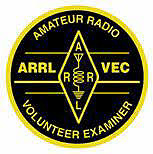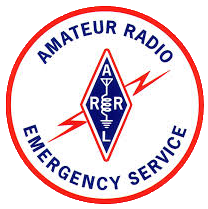One thing you should expect in most emergency scenarios is loss of power. Only people with radios which are capable of running on, and having emergency power, will be able to communicate for any significant period of time. As an emergency communication (EmComm) amateur radio operator, you should endeavor to have two sources of emergency power – even if they are both of the same type.
Of course, many of us won’t have the money for heavy investment in backup power systems. So, while we discuss this, we all need to realize that many really great ideas for backup power will not be practical for all members.
Whichever emergency power sources you pick, know the capabilities and limitations of these alternative methods of powering your equipment..
Your emergency power considerations need to be based upon two scenarios: Maintaining operations at your home or at the deployment site. Most of us will be counting on our car battery to provide our emergency power at a deployment location such as an emergency shelter.
Alternative Power Sources
There is also no reason why a typical car battery can’t be your home system as well. Keeping a car battery in a ventilated area on a trickle charger requires only that you bring the battery inside and hook it up when the need arises. Many of us already have car battery chargers, so the investment is primarily a battery. I would consider using some kind of connector that allows you to quickly and easily connect the battery, perhaps even keyed connectors so you don’t have to worry about polarity while you’re hurrying to hook up your backup power. Anderson Powerpole connectors are a good option. The downside of using car batteries is they are not tolerant of repeated "deep cycling" (full discharge / recharge).
For those that aren't familiar with them, Anderson Powerpole connectors are keyed connectors, usually color coded, that are friction attached. Being keyed, it's almost impossible to hook them up wrong, and the color coded connectors also provide a visual indicator of how to connect them. Being friction attached, no latch of any kind, they just push together and pull apart, which makes them easy to use and less likely to cause damage to radios if someone trips over a wire in a crowded make-shift communications room.
Some hams have older hand-held radios and are not in a financial position to afford something newer. Older radios may have more current drain. Also older HT Ni-Cad batteries have decreased performance. If you plan on using your HT and the battery doesn’t hold a charge or you have no spare battery, consider the investment. If money is tight then consider purchasing a couple battery packs that you can install alkaline or rechargeable batteries in.
Portable backup generators are a good option, but you’ll need to have fuel for them and they aren’t all that efficient for communications use. However, if you want one to keep freezer going anyway, then this may be a good option. The biggest issue related to these is keeping fuel handy, especially with the rapidly decreasing life of gasoline as ethanol and other mixes are mandated.
Portable “Jump Starters” have been mentioned during a past round-table. These are useful because they can be used for their intended purpose, but also provide a portable higher-current power source. Many of these units have the 12 volt “cigarette lighter” type power plug. Others have USB ports and even 110 volt capability. This would run an HT for quite a while and also provide considerable run time for a mobile or base unit if transmit power is kept to the minimum necessary.
Solar power is often used for keeping batteries charged, and can even power low-consumption equipment on a sunny day. However, here in Georgia, the most likely emergency response scenarios are probably not going to be taking place on clear and sunny days. This might be considered for trickle charging backup battery systems. The cost of solar power is usually just too prohibitive. I brought a Solar Cell out for Field Day a few years back, to extend the life of our alternate power station, having used it to charge the battery before-hand.
Sealed batteries and Marine batteries are really good for battery backup. These are batteries that can be safely charged, discharged, and stored indoors. These types of batteries are used in Uninterruptable power supplies and other devices that require operation where power is not constant. These are not as expensive as solar power or backup generators but still more expensive than a typical car battery. I personally believe this is a good compromise and has become my backup power system. Batteries charge off the same power supply that runs my radios and one set is then tied to my radios, so I’m always “running off battery”, being recharged by the power supply. In this configuration a power outage doesn’t even interrupt radio operations for a moment.
Gary/KJ4MHS mentioned seeing someone hook a 12v generator to a bicycle, so a person could peddle the bike to produce power. Used in conjunction with a battery, this could be a useful system for maintaining charge on batteries and recharging them, and getting a little exercise to boot!
Regardless of which battery backup method you use, be sure to determine how much power is required so your power systems is sized to support the equipment. By knowing current draw you can come up with some good rough estimates of how long you can operate with the power system you choose.
Power Requirement - AH
Regardless of your backup power system type, operators should consider how much power, in Amp Hours, is required. Amp hours is normally determined by estimating average power consumption and the number of hours you are anticipating operating. For instance, most radios consume twice the power they output when transmitting, so your 50W radio will actually consume about 100W when keyed. Knowing power equals Volts times Amps (V*A), Amps will equal watts divided by Voltage. So 100W/12V=8.3A. Receive in most radios will draw an Amp or less in receive.
Now that we have transmit and receive current draws, we need to estimate how much transmitting versus receiving we will be engaging in. It's safe to estimate, if you aren't net control or a liaison to another net, that you'll be transmitting for five minutes or less. So, for 55 minutes you'll draw 1A, while for 5 minutes you'll draw 8.3A. So how do we average the power consumption to Amp-Hours (AH)? A little use of fractions. In the example provided we would factor the two current draws based upon how much of the 60 minutes in an hour the amperage is being consumed. In the above example (8.3A for five minutes and 1A for the remaining 55 minutes of the hour) the formula would be (8.3*5/60)+(1*55/60)=1.61AH.
Knowing we want to 1.61AH available for a radio and, assuming we want to operate for eight hours, we would multiply the two, 1.61*8=12.9AH capacity in the battery.
Final Thoughts
Finally, most amateur radio equipment runs on 12 volts. As a result, we should consider gearing our backup systems along those lines to get maximum efficiency. Remember, converting from one voltage to another ALWAYS results in a loss of energy, something to be avoided when power needs are a premium and availability is at a minimum. The exception to this is if you’re one of the lucky few who has whole-house propane or natural gas backup generation, but even then a simple battery backup should probably be kept handy, just in case.




